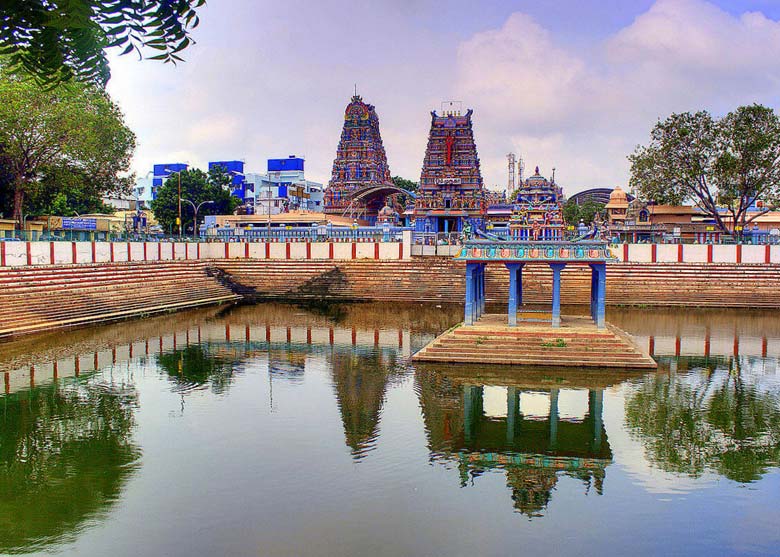Tourist Places To Visit in Chennai
Chennai is the new name for the old city of Madras, the garden gate-way to South India. (The British named it after a fishing hamlet called Madraspatnam, supposedly offered to Francis Day, an East India Company trader, in 1639 by the Raja of Chandragiri, the last Vijayanagar ruler.) The fourth-largest city in India, Madras still has room to expand. From the time the British first established Fort St. George on a sliver of beach, the city has grown by absorbing the surrounding villages—thus the baffling array of neighborhood names like Nungam-bakkam, T. Nagar, Adyar, Mylapore, and George Town.
Each area has developed distinctly, often along caste lines, from the Chettiars (a South Indian caste of traders) of George Town to the civil servants and industrialists of Nungambakkam. Even today, municipal boundaries expand, multistory apartment and office buildings replace bungalows, and new residential areas spring up along the Shore Road to Mamallapuram. Growth has made traffic nearly unbearable here, with pollution and noise levels rising daily. Cars, buses, trucks, auto-rickshaws (or “autos,” as they’re popularly called), mopeds, bicycles, motorcycles, pedestrians, and cows all compete for space in the streets; only yogic detachment keeps the frustration at a bearable level. (Traffic on the main avenues, like Anna Salai, is well regulated and moves along.) To ease congestion, the city is presently building a large number of over-passes, but the construction itself has reduced traffic to a crawl in some sections. Generally speaking, be prepared for detours and delays.
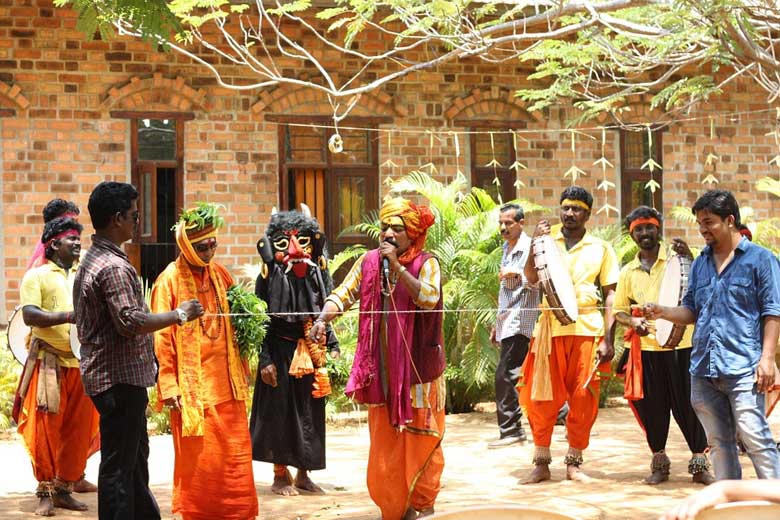
Chennai Tour
In the early 1990s, a government committee called Vision 2000 launched a program intended to reverse years of inadequate urban planning; yet side roads are still full of potholes and bordered by picked-over garbage, and many destitute people camp on city streets. The water supply is woefully inadequate, even nonexistent in some areas. Tanker trucks bringing water into the city add to the congestion and pollution. The phone system is still insufficient, and the demand for electric power increases with population growth and business expansion.
The rapid arrival of multinational corporations has changed the placid pace of life in Madras, which in the old days was alive at S AM and asleep by 9 PM. Still, nothing seems to have shaken the city’s spiritual essence. Expanding Madras is a fascinating place, its increasingly cosmopolitan face contrasting sharply with its resolutely religious soul.
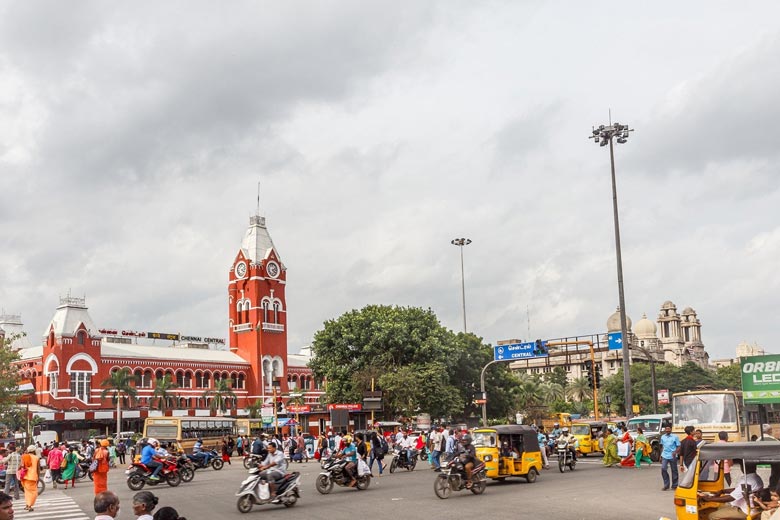
Chennai
Also Visit – https://www.swantour.com/south-india-tours/chennai-tirupati-tour-package.php
Just as Madras has been renamed Chennai, so have many of the street names changed, very often to honor contemporary politicians. Some of the new names are not in colloquial usage, but here’s a partial list, with the old name listed first (salai means street or road): Mount Road—Anna (“Elder Brother”) Salai; Chamier’s Road—Muthuramalinga Road; Mowbray’s Road—T. T. K. (Krishnamachari) Road; North Beach Road—Rajaji Salai; Nungambakkam High Road—Uttamar Gandhi Salai; Poonamallee High Road—Periyar E. V. R. High Road; South Beach Road—Kamarajar Road.
Find below Swan Tours list of Top 15 Tourist places to visit in Chennai:
Places to Visit in Northern Chennai
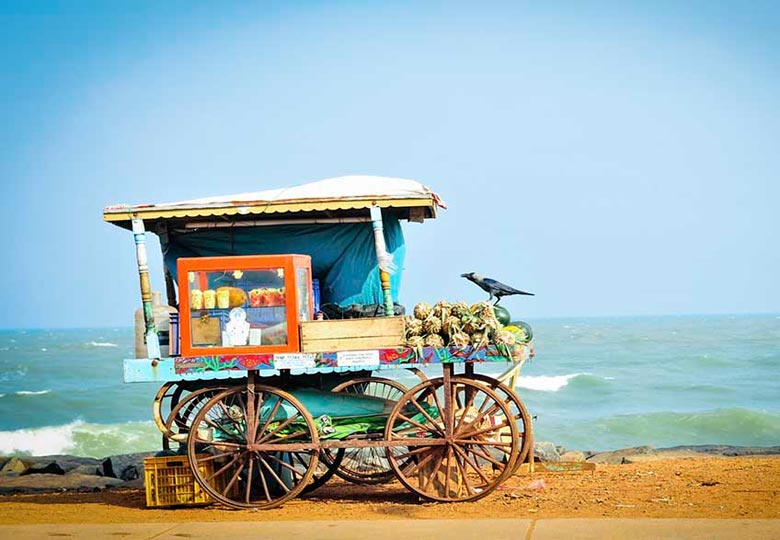
Places to Visit in Northern Chennai
The best way to explore Madras is to follow the city’s expansion south from Fort St. George. Some distances are short, but if the temperature is 100°F and the humidity 80%, you won’t feel like walking; if oppressive heat threatens, hire a car. Start at St. Mary’s Church in Fort St. George. Move on to the Fort Museum; then walk by the Tamil Nadu State Legislature. Return to St. Mary’s Church, taking in the mixture of historic buildings and bureaucratic offices. Drive the 1/4 mi to the High Court via the road that tunnels through the fort’s massive walls; park and walk to Armenian Street. Alternately, take a taxi or auto-rickshaw to N. S. C. Bose Road and get out at the junction of Armenian Street for a stroll through George Town. Walk down Armenian Street to the beautiful Armenian Church, which was built in 1629 and is no longer used for worship. As you wander on, look up and you’ll see evidence of second-story residence—many merchants still live in George Town. On your way back to the High Court, pass the Flower Bazaar (N. S. C. Bose Rd.), a riot of color and fragrance, on your right. Just south of N. S. C. Bose Road and before Prakasam Road (formerly Popams Broadway), check out the Fruit Market, where bananas ripen in enormous warehouses. Complete your tour of George Town back at the High Court.
The ideal time to cover this route is Sunday morning, when the traffic and parking are most benign. The full tour should take S or 6 hours, including thorough tours of George .Town and Fort St. George (2 hours each) and half an hour in the High Court.
Tourist Places to Visit in Northern Chennai
#1. Fort St. George
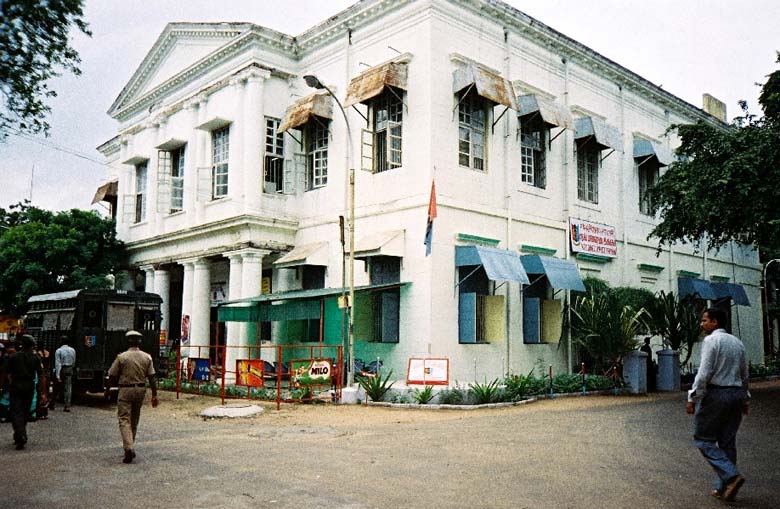
Fort St George Chennai
The first British fort in India was founded by Francis Day on a thin strip of sand leased from the Raja of Chandragiri. Christened on St. George Day in 1640, Fort St. George, complete with walls 20 ft thick, has remained the symbol of the Raj, its history intertwined with that of the rest of British India. The Indian army and civil ser-vice, Colin Mackenzie’s land survey, and the British archaeological, botanical, and zoological surveys of India were all conceived on this site. Now the home of the Tamil Nadu State Legislature, it’s quietest on Sunday.
#2. Fort Museum
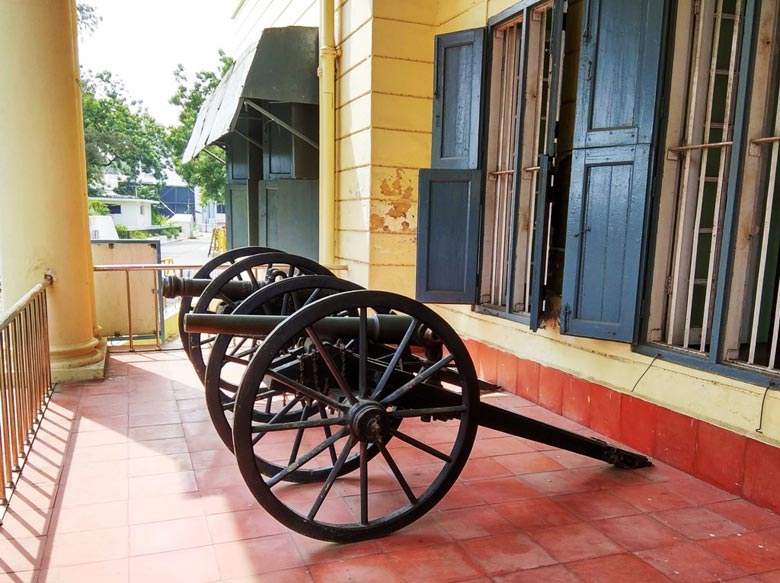
Fort Museum chennai
Once an exchange used by East India Company merchants, this building is now a museum of Indian history. Everything from old uniforms and coins to palanquins and padlocks is on display, including some wonderful old prints. Study the exhibits closely, as they’re not always well labeled.
#3. George Town
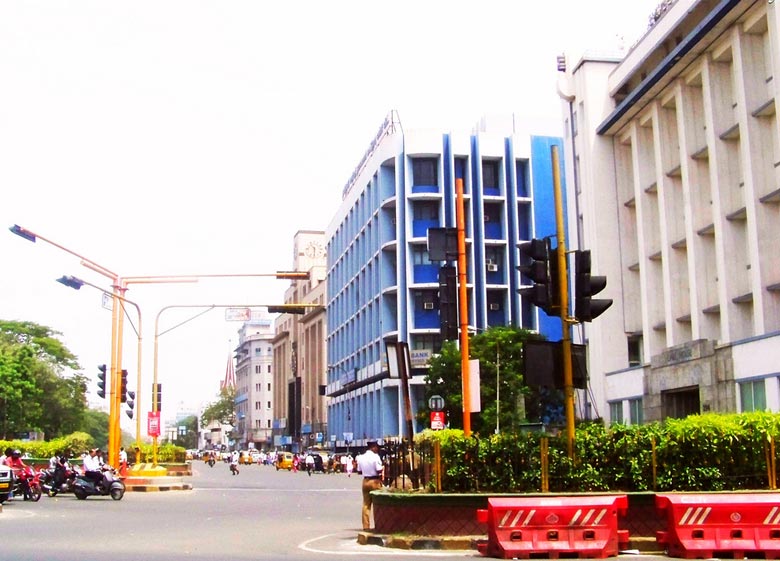
George Town
If you tend toward agoraphobia, George Town is not the place for you, as walking—the only way to explore this teeming warren of congested streets—is often hard going. Pedestrians weave in and around vendors, carts, and cows while others conduct business on the sidewalk or in the street. Before you venture into George Town, make sure you have a detailed map of this area so you can wander with confidence; many streets have similar names. For the full experience, come in the morning, when the bustle is at its peak.
Originally called Black Town, this 1 1/2-by-2-mi area was first settled by lower-caste artisans who provided textiles to the British traders. After Black Town was burned in the British–French wars, the new town was laid out in a perfect grid pattern, each section housing a different group or caste with its own place of worship. The street names echo George Town’s mercantile history, as each area bears the cultural characteristics of the group who migrated there in the course of doing business with (or for) the East India Company: Not only Indians but Portuguese, Scots, Armenians, and Jews settled here. Another prominent group is the Chettiars; you’ll notice that many of the street names end in “chetti.” Two competitive sub castes of the Chettiars, who speak different languages and observe different religious traditions, live in their own areas, divided only by Prakasam Road. The Chettiar factions long vied for mercantile power, first with the East India Company and then with the merchants of the Raj.
#4. High Courts
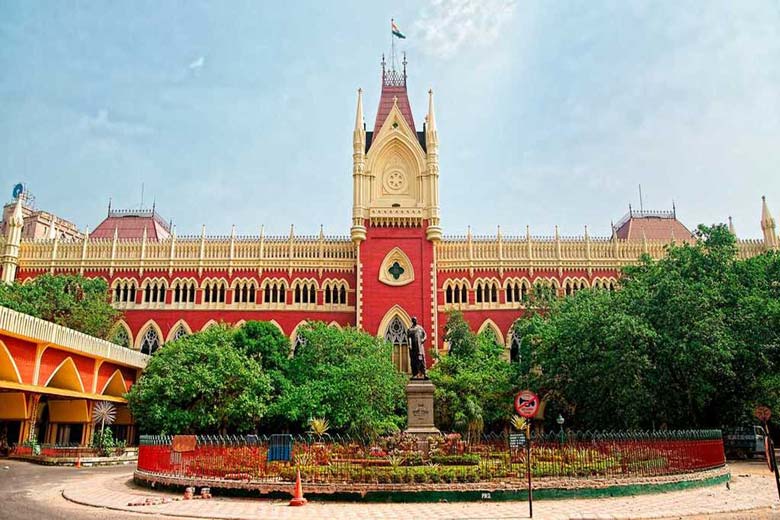
High Courts Chennai
This large judicial complex is a magnificent example of Indo-Saracenic architecture, built of red sandstone with intricate ornamentation on the walls and minarets. (The tallest minaret was used as a lighthouse until the 1970s.) Inside is a labyrinth of corridors and courts, most of which you can visit; court number 13 has the finest decorations inside. Within the compound is a tomb in the shape of pyramid; one of its two inscriptions is to the only son of Elihu Yale, governor of Fort St. George from 1687 to 1691. The child died in infancy and was buried in the High Court compound.
#5. St. Mary’s Church
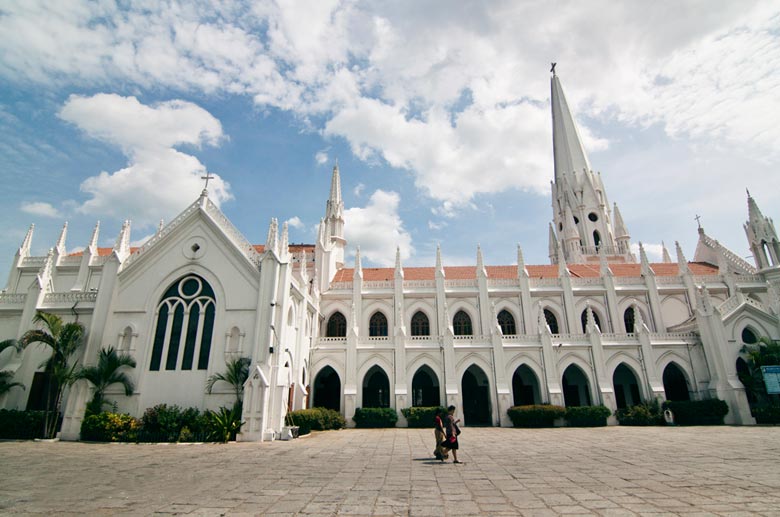
St. Mary’s Church
Consecrated in 1680, this church is the oldest masonry structure in Fort St. George. The punkahs and some flags are gone, and the steeple has been replaced, but otherwise the building with its three-arched aisles and bomb-proof roof has not changed. The marriage of governor Elihu Yale (of Yale University fame) was the first one performed here. Job Charnock, founder of Calcutta, had his three daughters baptized here before the family moved to Bengal, and St. Mary’s congregation included, at one time or another, Thomas Pitt, Warren Hastings (later the first governor general of British India), Lord Cornwallis, and Arthur Wellesley, later the Duke of Wellington.
#6. Tamil Nadu State Legislature
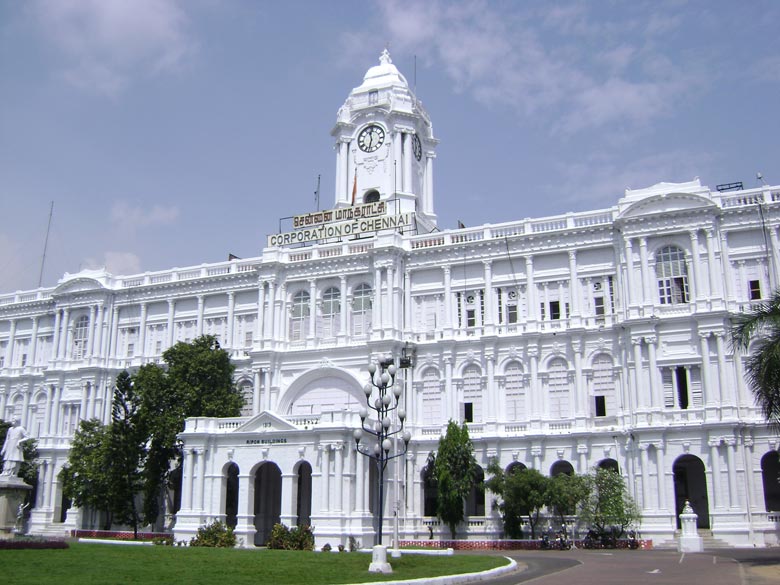
Tamil Nadu State Legislature
This crowded, active seat of the state government occupies most of the area between St. Mary’s Church and the Fort Museum. The former house of Robert Clive (of the Battle of Plassey fame) is the “Pay Accounts” office. Other sections of the fort are under military control.
Central Chennai
What are the places to visit in Central Chennai – As Madras grew, the city moved south, expanding along the beach and inland to Egmore and Nungambakkam. The Chepauk district, home of Madras University and Chepauk Palace (now government offices), has some of India’s best Indo-Saracenic buildings—a combination of Hindu, Muslim, and Victorian Gothic styles that makes a fitting display for a city with roots in all three cultures. Farther south along the beach is the Triplicane neighborhood, with the Parthasarathi Temple. Inland, toward the center of Madras is Anna Salai, a major shopping and business district. North of Anna Salai is Egmore, bordered by the curves of the Cooum River and home to the National Museum and Art Gallery. Farther south across the Cooum is Nungambakkam, traditionally a posh residential area of garden homes. It’s now a mixture of expensive boutiques, hotels, and offices, but a few of the massive old houses with walled gardens remain. A new wave of small fast-food joints (as in hot dogs and pizza) and restaurants has hit Anna Salai, Egmore, and Nungambakkam.
It’s easiest to cover this ground by hiring a car and driver for the day, but you can also take auto-rickshaws from point to point. Early in the morning, drive south on Kamarajar Road from Fort St. George along the magnificent Marina Beach and passing the Indo-Saracenic buildings of the government and university on your right. Note the brick Ice House at Presidency College: Clipper ships from New England, which used ice as ballast, used to unload it here before it found its way into the nawabs’ drinks. Beyond the contemporary political structures and the public swimming pool on the ocean side is the marina promenade: Have your driver stop at its north end (just south of the pool), and take a stroll. Rejoin your driver back in the promenade parking lot and drive to the Parthasarathi Temple C). After this burst of South Indian temple architecture, St. George’s Cathedral O provides a striking contrast. The National Museum and Art Gallery completes your tour with a superb collection of South Indian bronzes.
Timing
The marina walk and the temple will each take an hour, the cathedral about 45 minutes, and the museum two to three hours, for a total of between five and six hours.
Tourist places to visit in Central Chennai
#7. Marina Beach
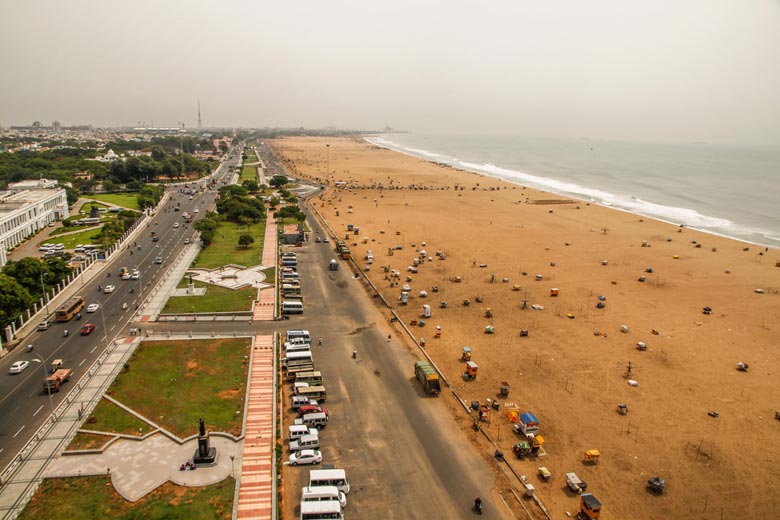
Marina Beach
This beach is a favorite early morning promenade and exercise spot. At 6 AM you can see fishing boats casting off and fit folks jogging and performing calisthenics or yoga. In the evening, strollers mix with women haggling with fishermen. During holidays the beach turns into a carnival, complete with vendors and hand-driven carousels, and everyone turns out to mingle and enjoy themselves. The under-tow is strong here, so the beach is not used for swimming.
#8. National Museum and Art Gallery
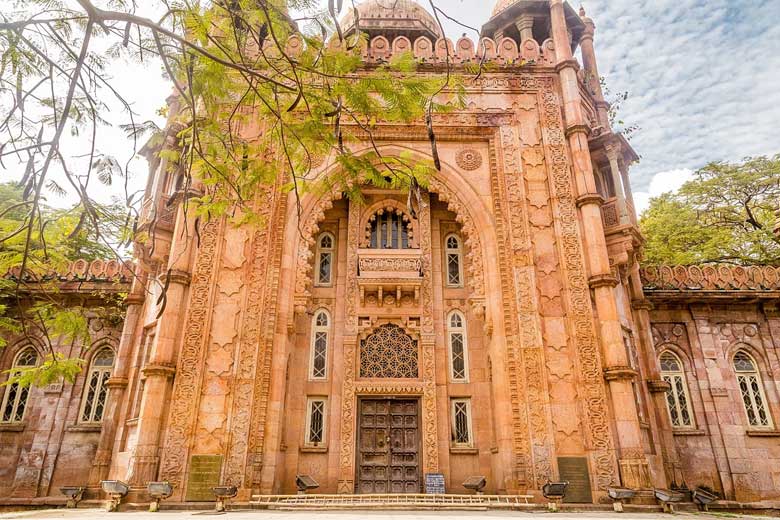
National Museum and Art Gallery Chennai
This museum is known for its superb collection of Pallava and Chola (8th- to 11th-century) bronze sculptures. The best-known work is probably the Chola Nataraj—a detailed 2-ft statue of the dancing Shiva, surrounded by the cosmic fire, that appears to be in constant motion. Many of the less spectacular bronzes are still worth studying for their detail and facial expressions. Other artworks from all over South India, including ancient Buddhist statues and Jain sculptures, are well represented. The museum also has an arms gallery that’s strong on weapons of the Raj period.
#9. Parthasarathi Temple
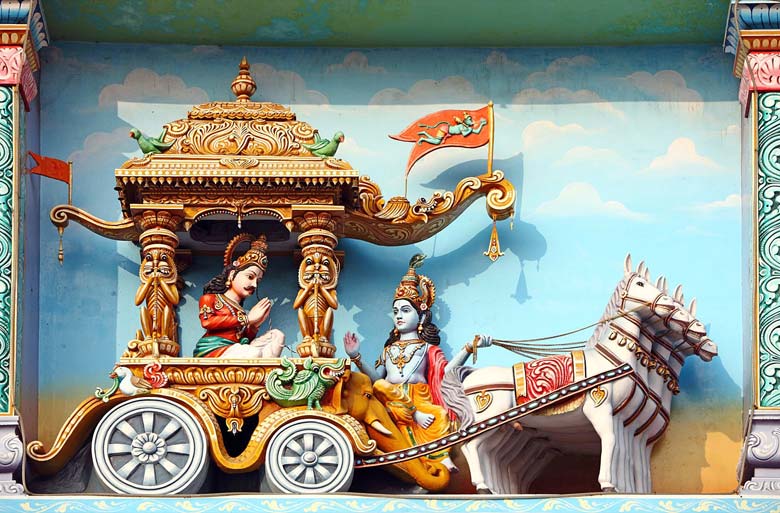
Parthasarathi Temple
Built by the Pallavas in the 8th century and re-built by the Vijayanagar kings in the 11th century, this Vishnu temple is dedicated to Krishna, the sarathi (charioteer) of Partha (Arjuna), and is probably the oldest temple in Madras. Legend has it that on the eve of the great battle in the Pandava-Kaurava War, Krishna imparted to Arjuna the Bhagavad Gita. After passing under the colorful gopuram, you’ll enter the courtyard, which has several carved shrines. The four streets surrounding the temple have stalls selling flowers, small idols, and other puja articles; musical instruments; and jewelry.
#10. St. George’s Cathedral
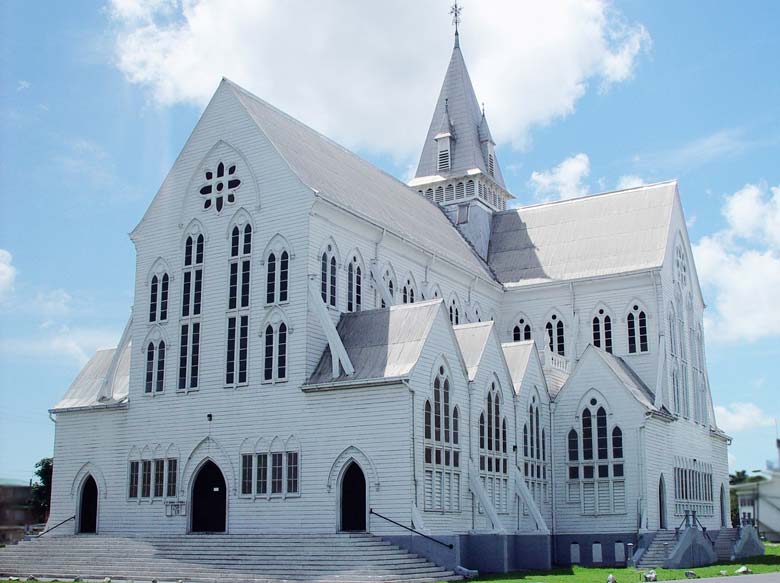
St. George’s Cathedral
Set back from Cathedral Road in pleasant gar-dens, this white colonial church has a 130-ft spire. It was originally Anglican, but it became part of the Church of South India when the Diocese of Madras was constituted in 1835, and is now the Church headquarters. The interior is light and airy, with fascinating tablets and tombs.
Southern Chennai
In the process of expanding ever southward, Madras incorporated old areas like Mylapore (“Town of Peacocks”), which has a 13th-century temple, and in the 1930s developed some new areas like Thyagaraja Nagar (T. Nagar). More recently, Besant Nagar and Kalakshetra Colony were incorporated, both residential areas with broad, tree-lined streets and excellent shopping areas where it’s relatively easy to get around except at rush hour. (At one busy intersection in T. Nagar there’s an eatery called Hotel Traffic Jam.)
In the morning, hire a car and go to the cantonment, a military base and officers’ training academy, to see the Church of Our Lady of Expectation. Drive back east to visit Madras Snake Park), in Guindy Park, and then The Study). Follow R. K. Mutt Road north to the Kapalishvara Temple, then turn right and continue to the end of Kutcher Road to see the Basilica of San Thome Cathedral g, noting the Portuguese architecture in contrast to that of St. George’s Cathedral.
Timing
Allow five or six hours for this tour, as there’s a lot of driving involved.
Tourist Places to Visit in Southern Chennai
#11. Basilica of San Thome Cathedral
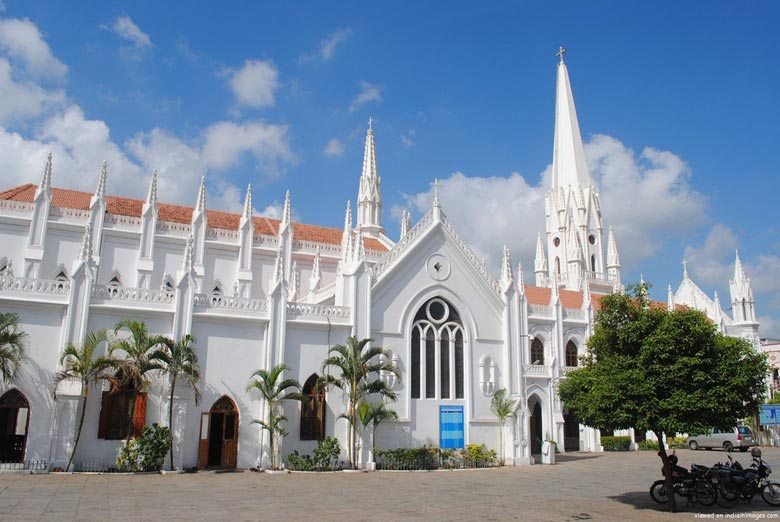
Basilica of San Thome Cathedral
It’s commonly held that Thomas the Apostle (“Doubting Thomas”) lived his last years in South India, walking daily from his cave at Little Mount to the beach at Mylapore to preach. Before being captured by the French, Dutch, and English, San Thome was a Portuguese enclave, its name dating from the cathedral’s inception in 1504. In the 1890s the cathedral was reconstructed as a neo-Gothic structure with a 180-ft basilica. St. Thomas is thought to be entombed inside.
#12. Church of Our Lady of Expectation
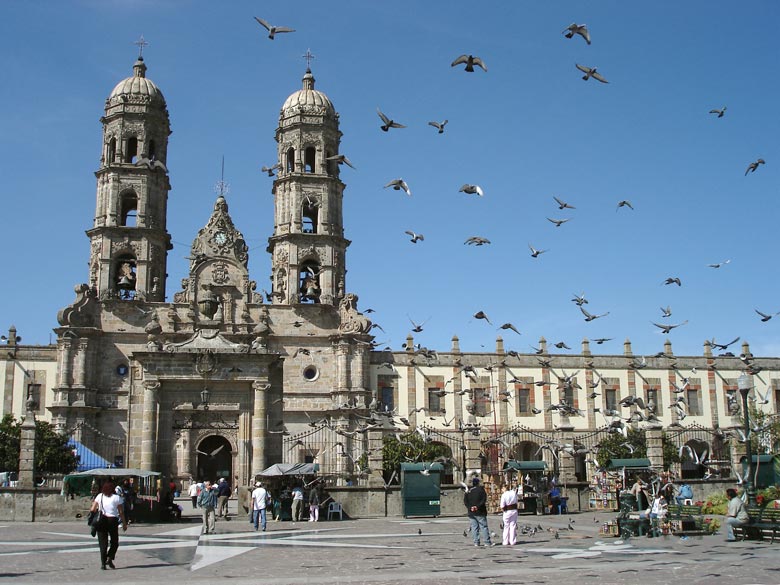
Church of Our Lady of Expectation
Drive to the cantonment, take the brick road to the top of St. Thomas’ Mount (or climb the roughly 130 granite steps from the base below), and prepare to be dazzled by a breath-taking 360-degree view that includes the entire city of Madras, with the Bay of Bengal beyond and a countryside full of green rice fields rolling away to the western horizon. After the deafening noise of city traffic and the crush of crowded streets, this peaceful and serene oasis offers a spiritual aerie nearly 300 ft above sea level. Legend has it that Thomas the Apostle was martyred while praying in front of a cross engraved in the church’s natural stone base.
#13. Kapalishvara Temple
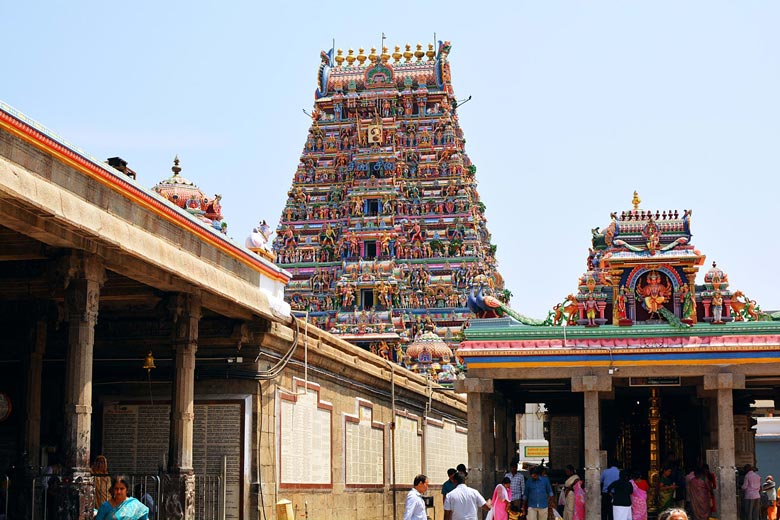
Kapalishvara Temple
Dating from the 13th century, this crowded Shiva temple is one of the best examples of Dravidian architecture in India. During the Arupathumoovar festival (commemorating the 63 Saivite saints) in March, the temple streets are closed for 10 days to make room for processions of carts and idols around the complex. Kapalishvara Temple is not a rarefied pilgrimage site but a community gathering place for worship, very much a part of daily life.
Just inside the south entrance, under the gopuram, stands the shrine to Ganesh, a smooth black image that’s grown shiny from so many offerings. Worshipers break coconuts in front of and on Ganesh to ask his blessing for a new venture or just for a good day. Sometimes in the late afternoon, a priest talks to groups of widows in the courtyard or mandapam. Farther on around the temple, to the left, you may see a man prostrate himself before the Nandi (bull that is Shiva’s vehicle) that guards the entrance to the inner sanctum. Continue around the building until you come to a mandapam with statues of the nine planets. It’s auspicious to walk clockwise around these planets nine times, so joina the procession. Several of the shrines set into the courtyard wall are accessible to non-Hindus.
#14. Madras Snake Park
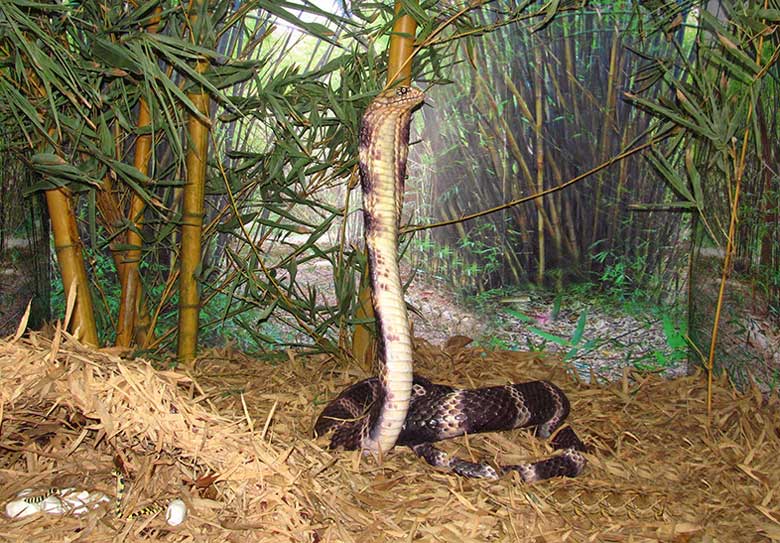
Madras Snake Park
At the edge of the Raj Bhavan (Government House), the snake park gives you a chance to see and photograph the common snakes of India (more than 40 species) as well as crocodiles, monitor lizards, chameleons, and tortoises.
#15. The Study
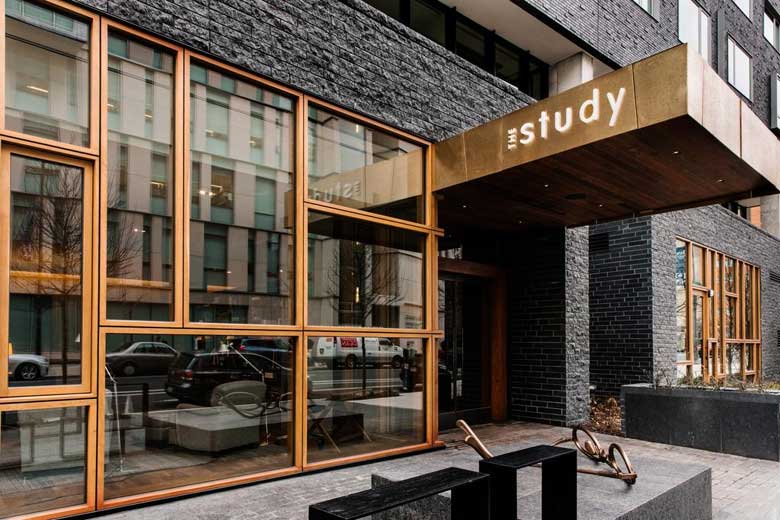
The Study Chennai
Shortly before his death in 1986, the thinker J. Krishnamurti directed that his home and gardens become a place of learning and contemplation, open to anyone who wished to study his teachings in quiet and tranquil surroundings. Called simply “The Study,” the center contains a complete library of Krishna murti’s writings in addition to others’ books on religion, philosophy, psychology, literature, and the arts.
For more tourist information on Top 15 Tourist Places to Visit in Chennai contact Swan Tours – One of the leading Travel agents in India operating since 1995.
